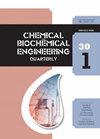添加银对铜基形状记忆合金的影响
IF 0.9
4区 生物学
Q4 BIOTECHNOLOGY & APPLIED MICROBIOLOGY
引用次数: 0
摘要
本文章由计算机程序翻译,如有差异,请以英文原文为准。
Effect of Silver Addition on Cu-based Shape Memory Alloys
Shape memory alloys (SMAs) are smart materials with unique properties of super-elasticity and shape memory effect. These properties are the consequence of thermoelastic martensitic transformation, which can occur under thermal or mechanical deformation. Cu-Al-Ag alloys have high temperatures of martensite transformation, unlike other SMAs, which makes them suitable for use in specific applications. In this paper, Cu-10Al-1Ag alloy was prepared by melting pure metals in an electric arc furnace and casting the melt in a cylindrical mold. The microstructure of the as-cast and quenched material was determined by optical microscopy (OM) and scanning electron microscopy (SEM) equipped with energy dispersive analysis (EDS). X-ray diffraction (XRD) analysis was performed to identify crystal phases in the microstructure, while transformation temperatures were determined by differential scanning calorimetry (DSC). The hardness of Cu-Al-Ag SMA was also determined with a microhardness tester. The results showed partially formed martensite in the as-cast state, and fully formed martensite structure, 18R-type, in the quenched Cu-10Al-1Ag alloy.
求助全文
通过发布文献求助,成功后即可免费获取论文全文。
去求助
来源期刊
CiteScore
2.70
自引率
6.70%
发文量
23
审稿时长
>12 weeks
期刊介绍:
The journal provides an international forum for presentation of original papers, reviews and discussions on the latest developments in chemical and biochemical engineering. The scope of the journal is wide and no limitation except relevance to chemical and biochemical engineering is required.
The criteria for the acceptance of papers are originality, quality of work and clarity of style. All papers are subject to reviewing by at least two international experts (blind peer review).
The language of the journal is English. Final versions of the manuscripts are subject to metric (SI units and IUPAC recommendations) and English language reviewing.
Editor and Editorial board make the final decision about acceptance of a manuscript.
Page charges are excluded.

 求助内容:
求助内容: 应助结果提醒方式:
应助结果提醒方式:


